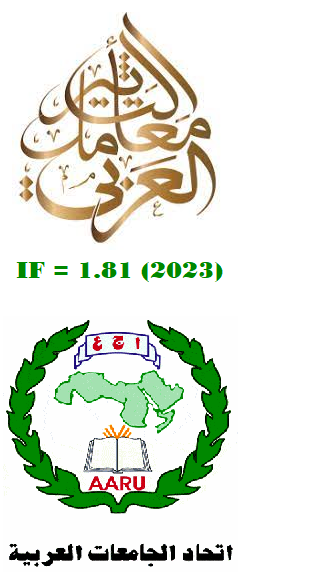Code Switching by Novice Teachers in EFL Classes and its Effects on Students
Cihan University-Erbil
Abstract
Code Switching (CS) is shifting from one language to another in a dialogue, a lesson, a sermon, etc. It is used across the board in multilingual communities deliberately and unconsciously. It has many benefits. It has many negative impacts, though. It might distract students’ attention and result in opposite consequences. Therefore, in this study, using CS by novice teachers who do not have enough experience as a medium of explaining the taught material. Besides, it takes into consideration students’ attitudes toward CS as positive or negative. If they understand better after implementing CS, they consider it positive. If, on the contrary, distracts their attention, they consider it negative. The data for this study were collected from 70 students through distributing an open questionnaire and direct observation. They were analyzed using IBM SPSS. The outcomes proposed that some students switch codes at the level of words to have a smooth conversation with colleagues. However, some novice lecturers tend to explain the whole lesson using students’ first language to make sure that they have grasped it well. They do so due to the lack of experience and shortage of vocabulary. The results also pinpointed that some students have a positive reaction toward CS, yet there are many students who do not prefer following it.
Downloads
References
Abbasian, M., & Azeez, I. (2021). The effect of using flipped class on teaching reading comprehension at Cihan university. Cihan University-Erbil Journal of Humanities and Social Sciences, 5(1), 101-105.
Al-Faris, S., & Jasim, B. (2021). Memory strategies and vocabulary learning strategies: Implications on teaching and learning vocabulary. Journal of Humanities and Social Sciences Studies (JHSSS). 3(10), 11-21.
Azlan, N., & Narasuman, S. (2013). The role of code-switching as a communicative tool in an ESL teacher education classroom. Social and Behavioral Sciences, 90(10), 458-467.
Bensen, H., & Çavuşoğlu, Ç. (2013). Reasons for the teachers’ uses of code switching in adult EFL classrooms. Hasan Ali Yücel Eğitim Fakültesi Dergisi, 20(2), 70-82.
Blom, J.P., & Gumperz, J. (1972). Social meaing in linguistic structure: Codeswitching in Norway. In: Gumperz, J., & Hymes, D., (eds.), Directions in Sociolinguistics. New York: Holt, Rinehart and Winston.
Boztepe, E. (2003). Issues in Code-switching: Competing Theories and Models. Working Papers in TESOL and Applied Linguistics, 3, 1-27.
Cromdal, J. (2003). The creation and administration of social relations in bilingual group work. Journal of Multilingual and Multicultural Development, 24(1), 56-75.
Gumperz, J.J., & Hernandez-Chave, H. (1975). Cognitive aspects of bilingual communication. In: Hernandez Chavez, E., Cohen, A., & Beltrano, A., (eds.), El Lenguaje de los Chicanos: Regional and Social Characteristics of Language used by Mexican Americans. Arlington, Virginia: Center for Applied Linguistics, p154-164.
Horasan, S. (2014). Code switching in EFL classrooms and the perceptions of the students and teachers. Journal of Language and Linguistic Studies, 10(1), 31-45.
Moghadam, S.H., Samad, A., & Shahraki, E. (2012). Code switching as a medium of instructions in an EFL classroom. Theory and Practice in Language Studies, 2(11), 2219-2225.
Mohammed, P., & Raewf, M. (2018). The content analysis of the research papers on language learning strategies. Qalaai Zanist Scientific Journal, 3(4), 904-911.
Obaidullah, M. (2016). Code switching in EFL classrooms: A Bangladeshi perspective. Theory and Practice in Language Studies, 6(5), 924-934.
Patmasari, A., Agussatriana, M., & Kamaruddin, A. (2022). An investigation of the use of code-switching in EFL classroom: Attitudes and perceptions. ELS Journal on Interdisciplinary Studies in Humanities, 5(2), 230-239.
Pica, T. (1994). Research on negotiation: What does it reveal about second language learning conditions, processes, and outcomes? Language Learning, 44(3), 493-527.
Poplack, S. (1980). Sometimes I’ll start a sentence in Spanish Termino En Espanol: toward a typology of code-switching. Linguistics, 18(7-8), 581-618.
Puspawati, I. (2018). Teacher’s use of code switching in EFL classroom and its functions. Journal of Foreign Language Teaching and Learning, 3(1), 2124039.
Rios, J., & Campos, J. (2013). Code-switching in the EFL classroom: Friend or foe? Revista de Lenguas Modernas, 19, 375-391.
Scotton, C.M., & Ury, W. (1977). Bilingual strategies: The social functions of code-switching. International Journal of the Sociology of Language, 13, 5-20.
Copyright (c) 2024 Huda Y. Abdulwahid

This work is licensed under a Creative Commons Attribution-NonCommercial-NoDerivatives 4.0 International License.
Authors who publish with this journal agree to the following terms:
1. Authors retain copyright and grant the journal right of first publication with the work simultaneously licensed under a Creative Commons Attribution License [CC BY-NC-ND 4.0] that allows others to share the work with an acknowledgment of the work's authorship and initial publication in this journal.
2. Authors are able to enter into separate, additional contractual arrangements for the non-exclusive distribution of the journal's published version of the work (e.g., post it to an institutional repository or publish it in a book), with an acknowledgment of its initial publication in this journal.
3. Authors are permitted and encouraged to post their work online (e.g., in institutional repositories or on their website) prior to and during the submission process, as it can lead to productive exchanges, as well as earlier and greater citation of published work (See The Effect of Open Access).









